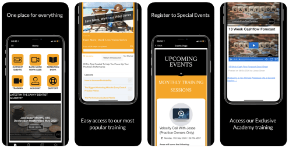Content marketing has been a big topic of conversation since social media really hit the scene. As dentists, we know that we should be creating content to reach new patients and establish our expertise, but it can often be confusing. How do we know when it’s working?
Content marketing often cannot be measured in terms of Key Performance Indicator’s or other metrics. It becomes an organic process of trust building. You want to answer key questions or concerns that a patient might have yet has nothing to do directly with saying, “Buy my services!”
Here are six copywriting secrets I learned from Alexi Neocleous, a leading copywriter in Australia.
Secret 1. Build trust first.
Going to the dentist is not most people’s favourite activity. It’s right up there with the fear of public speaking for many. Not only do patients come in fearful, but then we are immediately asking them for a great deal of trust so we can put our fingers in their mouth. Building trust requires laying the right foundation of sensitivity and respect.
Think about it this way. If I was to meet you at my dental chair and said, “Hi, it’s really nice to meet you. I know we’ve only known each other 15 minutes, but you really need to spend $20 thousand bucks with me fixing these teeth.” The likelihood of someone accepting that offer is pretty low. I like to tell people to slow down to speed up. Start by building trust.
The same holds true for content marketing. Creating content should come from a place of understanding, building rapport, and authenticity. The key is a multi-step process. Take the time to slowly understand where your patients are coming from, where they’re at, and building your credentials and their trust.
Secret 2. Create a funnel of increasing “asks”.
Platforms like Facebook make it possible for dental practices to build brand and develop an audience that identifies with your message. You can then allow these people to move through your funnel. At the top of the funnel is going to be things like content-rich videos and articles that have them click through to your website. Then you can expose them to bigger “asks” like an invitation to a webinar or a live event. Maybe even an initial consultation at your practice.
The key principal guiding this is increasingly complex requests as they move through the funnel. Once you’ve got people who are engaged with your content and begin moving through your funnel, you can begin to monetise their needs.
Secret 3. Let the audience choose their own experience.
Don’t try to decide the journey. Let the audience tell you. Their behaviour will naturally move them through the funnel. For example, if you’re producing great content at the top of your funnel, but a particular user is not clicking through to your blog or opting in to your newsletter, then it makes no sense for you to aggressively pursue them with advertising and offers. This user shouldn’t get your 50% discount offers.
This is a very different from someone who visits your pricing page and opens half of your last 10 email newsletters. This is someone who is interested and might warrant a phone call, or an evite into the practice, or a special discount offer.
Secret 4. Target your message to your ideal patient.
This is something I’ve talked about on the podcast and in other blog posts. You must target your message to your ideal patient. For example; If your ideal patient is a well – heeled busy professional, it might not make sense to advertise to them by offering discounts.
Busy professionals are not overly price sensitive. They can spend more if they wish to spend more. The price will be determined by the quality of the patient experience. So instead of offering a 50% discount for first visits, you might want to focus on showing that your practice is next level.
Connect with patients by talking about the things your specific patient population cares about.
Secret 5. Create content relevant to your patients by listening to your patients.
The quickest and easiest way to create content is by mining information from patients. Do you hear the same questions popping up over and over again? Jot them down. First ask your patients core questions that will resonant with a wide portion of your audience. This will help you create a solid foundation of value on your website that patients can use as a resource (thus creating trust).
When you are just starting out, there’s no need to worry about keywords or SEO or anything extremely technical. Google’s search engine gets savvier every day and content written by humans for humans is what is prioritised.
Secret 6. Everything is a story.
Stories are our most powerful form of communication. And stories aren’t just two-hour blockbusters. They can be case studies and blog posts.
Once you’ve established a list of the things your patients care about, delve in to these by telling them stories. The best stories are patient stories (of course, change any identifying information to protect patient privacy).
The great news is that if writing isn’t your forte, you can still create compelling blog post without writing a word. Instead, have someone interview you. Get one of your staff to say, “When someone asks you this question, what do you say? What advice do you give?” Record your answer and then have it transcribed. Give the transcription to a freelance writer to work their magic.
Final Words…
Content marketing isn’t about creating the perfect piece of content. It’s about creating consistent content that your patients can relate to. Once you’ve put the effort into creating a powerful, useful piece of content your patients are going to love, make sure they see it. Post it on your website, send it out through your email newsletter, and then post it across your social media platforms.






